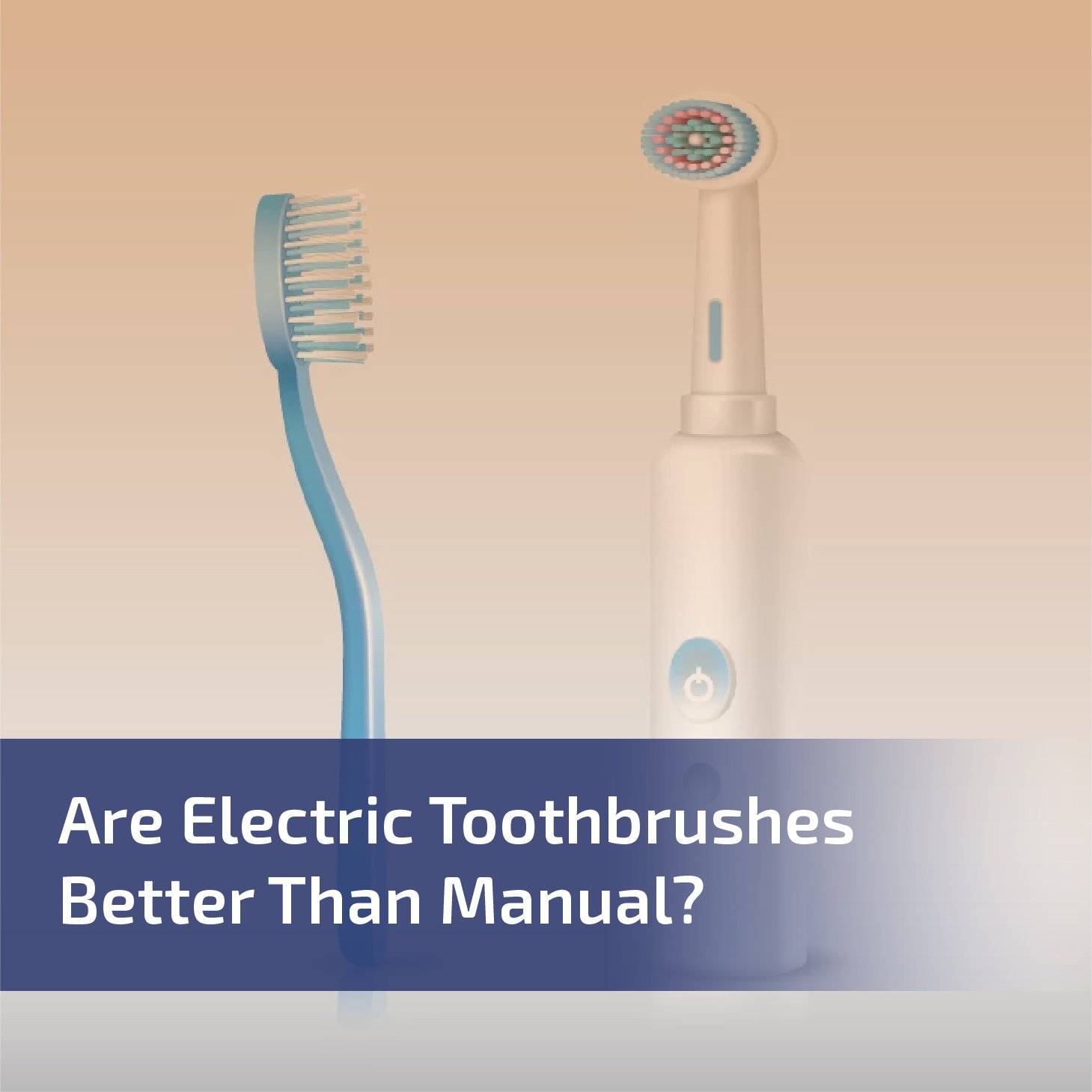
When it comes to maintaining good oral hygiene, one of the key decisions you have to make is whether to use an electric toothbrush or a manual one. This age-old debate has sparked numerous discussions among dental professionals and individuals alike.
In this article, we will delve into the question, “Are electric toothbrushes better than manual?” and explore the various aspects of both options. By the end, you’ll have a clearer understanding of which toothbrush suits your needs and preferences.
Many individuals wonder if electric toothbrushes truly outshine their manual counterparts. Well, the answer is not a straightforward one. While electric toothbrushes offer certain advantages, manual toothbrushes have their own set of benefits as well. Let’s take a closer look at each option:
Electric Toothbrushes
Benefits
Electric toothbrushes have gained popularity over the years due to their advanced features and convenience. Here are some reasons why they are favored by many:
1. Efficiency:
Electric toothbrushes typically feature rotating or vibrating brush heads that can cover a larger surface area compared to manual toothbrushes. This enhanced efficiency can result in more effective plaque removal.
2. Built-in Timers:
One of the advantages of electric toothbrushes is that they often come equipped with built-in timers. These timers help ensure that you brush your teeth for the recommended two minutes, promoting thorough cleaning and reducing the risk of missed areas.
3. Ease of Use:
Electric toothbrushes require minimal effort on the part of the user. The powered motion of the brush head does most of the work, making it an excellent option for those with limited dexterity or physical disabilities.
4. Additional Features:
Some electric toothbrushes offer additional features like pressure sensors, multiple brushing modes, and smartphone connectivity. These features can further enhance your brushing experience and help you maintain optimal oral health.
Drawbacks
1. Cost:
While electric toothbrushes have become more affordable over the years, their initial investment is still generally higher than that of manual toothbrushes. Additionally, replacement brush heads, which are needed periodically, can also be more expensive than replacing a manual toothbrush.
2. Maintenance:
Unlike manual toothbrushes that are ready to use out of the box, electric ones require regular charging or battery replacements. This not only means an additional ongoing expense for batteries but also the need to remember to charge them.
3. Portability:
If you’re someone who travels frequently, an electric toothbrush might not be the most convenient choice. They’re bulkier than their manual counterparts, and if they run on charging, you’d also need to carry their chargers or docking stations. For international travelers, voltage compatibility can also be an issue.
4. Durability Concerns:
While many electric toothbrushes are built to last, they’re still electronic devices. This means they’re susceptible to potential electronic failures, malfunctions, or reduced battery life over time. Dropping them might result in more significant damage compared to dropping a manual toothbrush.
Manual Toothbrushes
Benefits
While electric toothbrushes have their merits, manual toothbrushes continue to be a popular choice for many individuals. Here’s why:
1. Affordability:
Manual toothbrushes are considerably more affordable compared to their electric counterparts. They are easily accessible and widely available, making them a budget-friendly option for most people.
2. Portability:
Manual toothbrushes are lightweight and compact, making them ideal for travel. You can easily slip them into your bag or pocket without worrying about batteries or charging.
3. Precision Control:
With a manual toothbrush, you have more control over the pressure and motion used during brushing. This allows you to focus on specific areas or areas of sensitivity, ensuring a comfortable and customized brushing experience.
4. Simplicity:
Manual toothbrushes have a straightforward design, making them easy to use and maintain. There are no complex settings or batteries to worry about, making them a fuss-free option.
Drawbacks
1. User Dependent:
The effectiveness of a manual toothbrush is heavily reliant on the user’s technique. An improper or inconsistent brushing method can lead to areas of plaque buildup, increasing the risk of cavities and gum diseases.
2. Lack of Timer:
Unlike many electric toothbrushes equipped with built-in timers, manual ones lack this feature. As a result, many users might not spend the dentist-recommended two minutes brushing, potentially leaving behind plaque and bacteria.
3. Potential for Over-Brushing:
Without the pressure sensors found in some electric toothbrushes, individuals might brush too hard with manual ones. This aggressive brushing can lead to enamel wear, making teeth more susceptible to decay and sensitivity. Additionally, it can lead to gum recession, exposing the tooth roots and increasing the risk of root cavities.
Conclusion
In the ongoing debate of electric toothbrushes versus manual toothbrushes, both options have their own advantages and appeal to different individuals. Electric toothbrushes offer efficiency, built-in timers, ease of use, and additional features, making them a popular choice for those seeking convenience and advanced technology. On the other hand, manual toothbrushes are affordable, portable, offer precision control, and are simple to use.